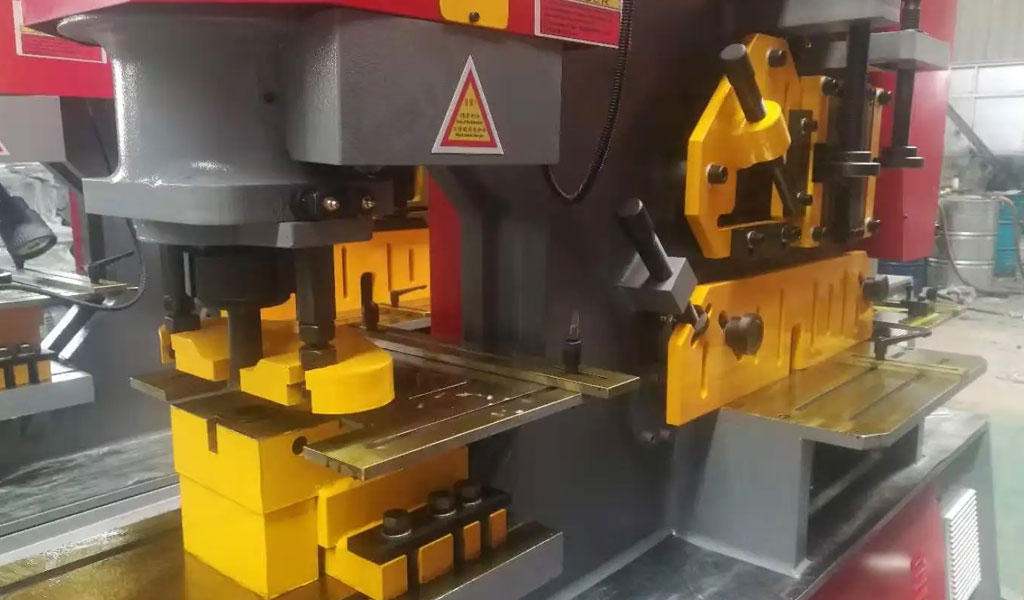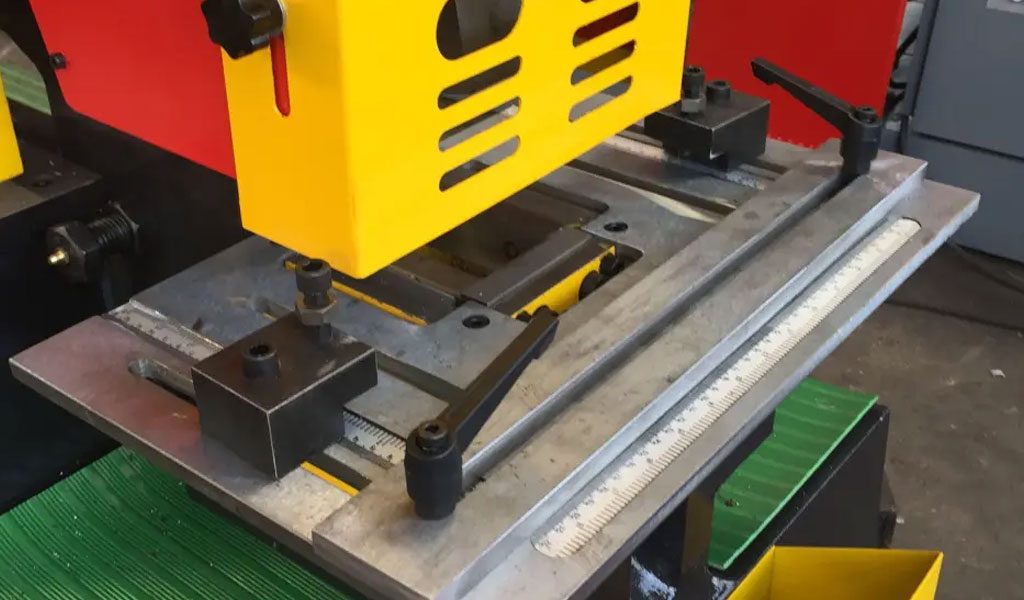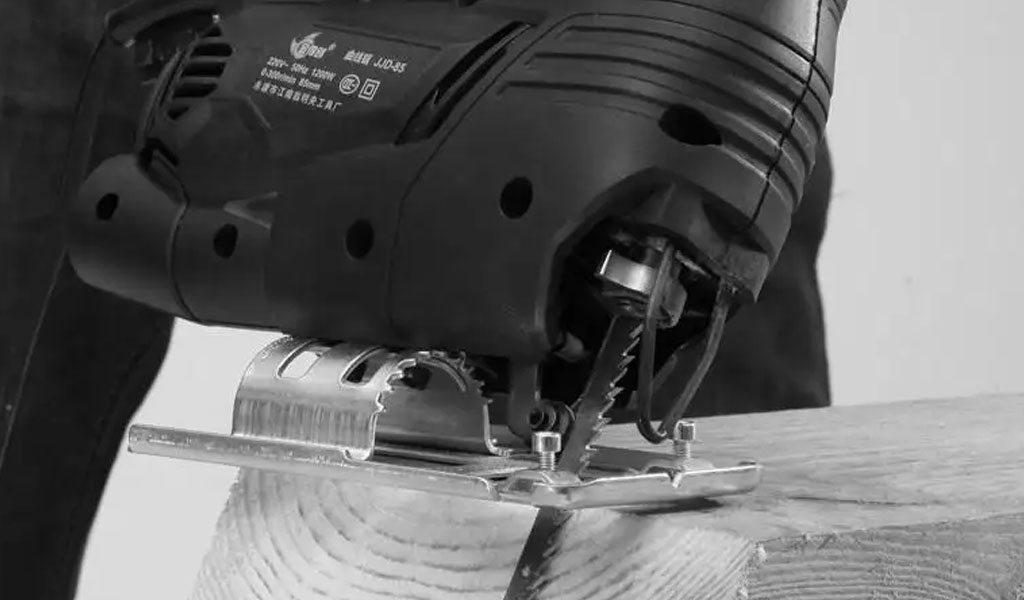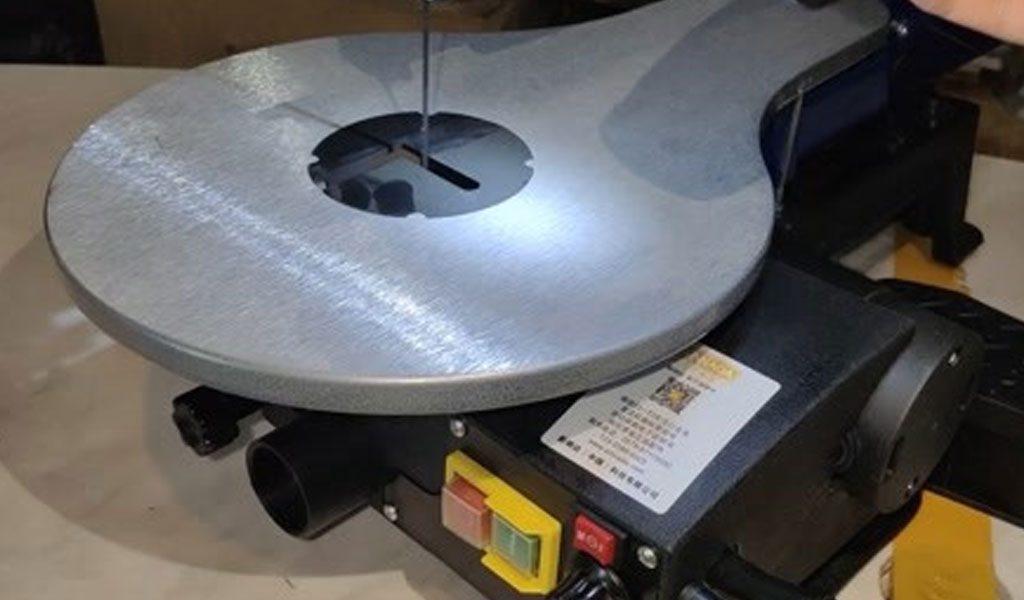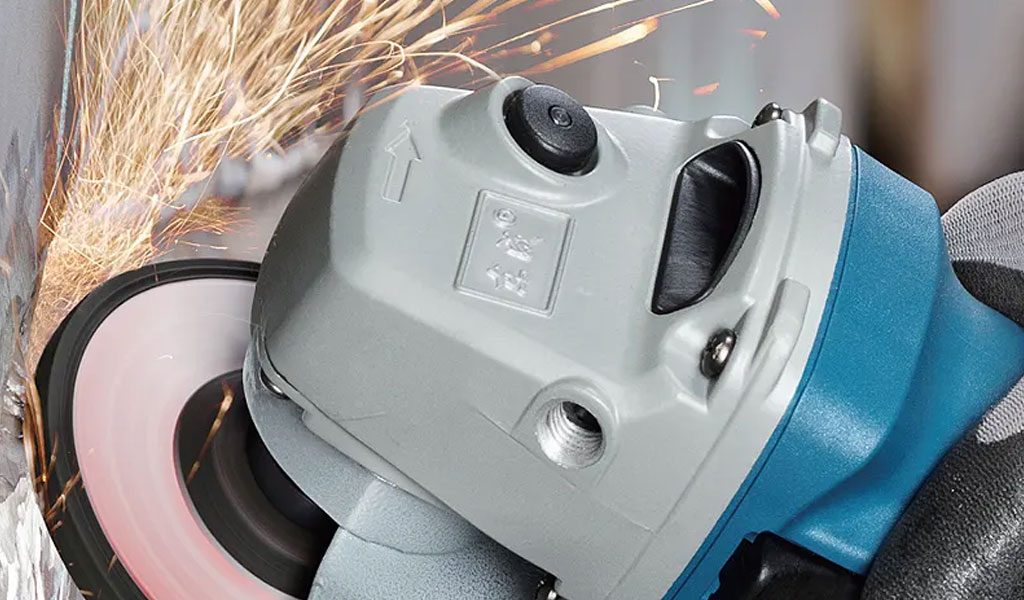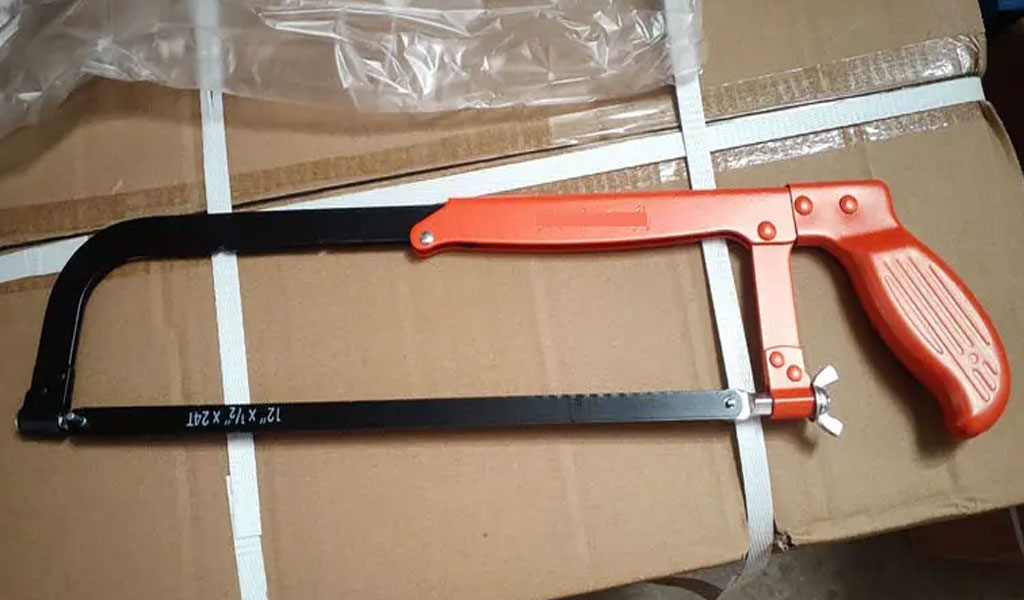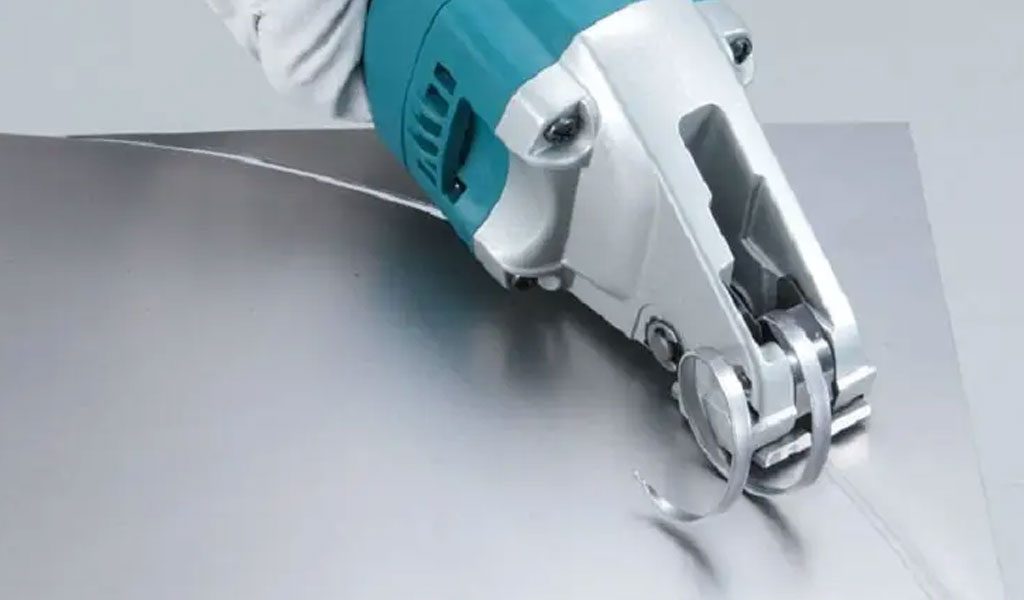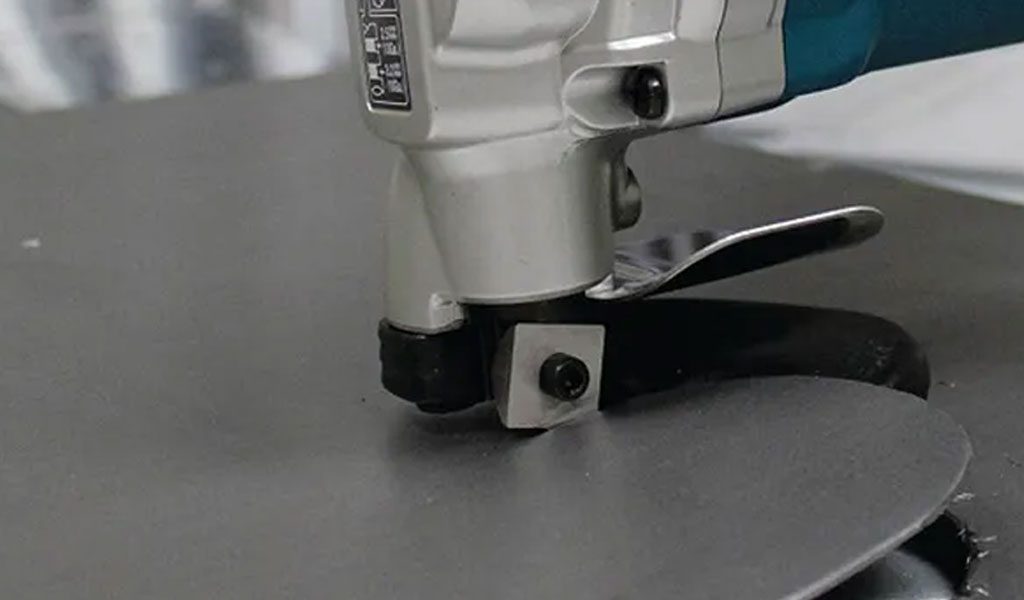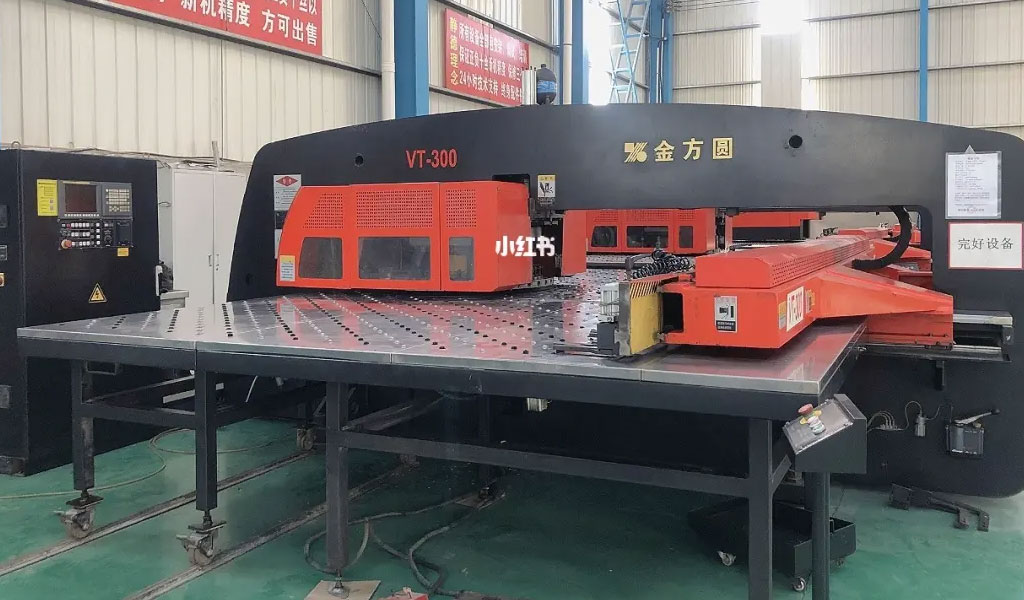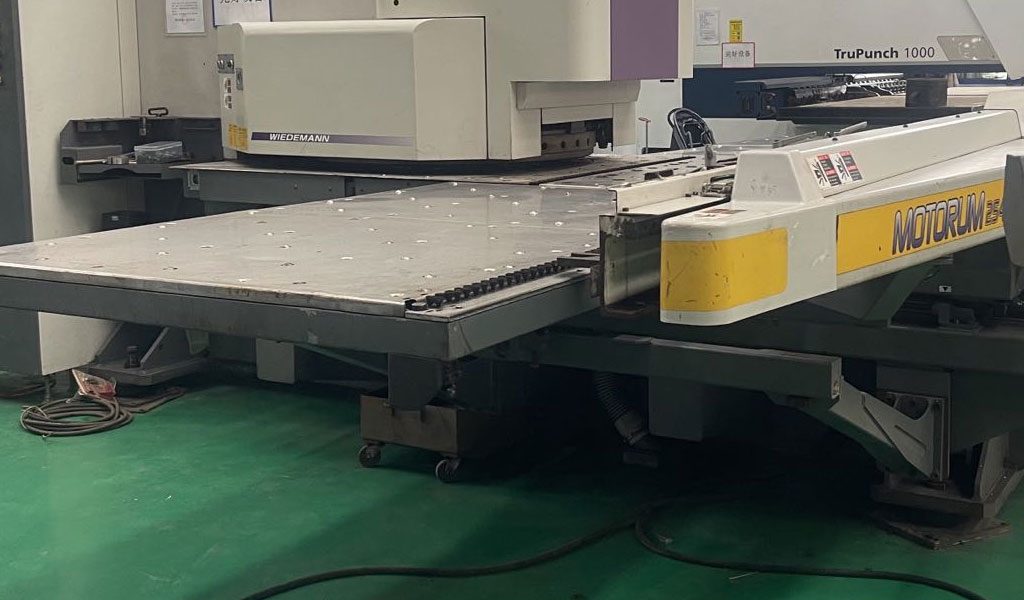Working with sheet metal requires precision and the right tools to achieve clean, accurate cuts. Whether for industrial purposes or DIY projects, cutting sheet metal demands the application of suitable techniques and tools. Here are the top 10 methods for cutting sheet metal:
Shears or Tin Snips
Shears or tin snips are quintessential hand tools utilized for cutting sheet metal. They are particularly effective for creating straight cuts or curved lines in thinner sheet metals. These tools come in various types, including aviation snips designed for curves and compound leverage snips tailored for thicker metals.
Advantages:
- Cost-effective: Shears and tin snips are affordable and represent an economical option for cutting sheet metal, making them accessible for DIY enthusiasts and professionals alike.
- Portability: Their compact size and lightweight nature make them easily portable, allowing for use in diverse settings, whether in a workshop or on-site.
- Perfect for Smaller Projects: These tools are ideal for smaller-scale projects, offering precise cutting capabilities without the need for larger, more complex machinery.
Considerations:
- Different Types Available: Understanding the variations among types of tin snips is crucial. Aviation snips come in left-cut, right-cut, and straight-cut variations, facilitating different cutting directions. On the other hand, compound leverage snips provide enhanced cutting force, suitable for thicker gauge metals.
- Material Thickness: While effective for thinner sheet metals, shears and tin snips may struggle or be unsuitable for cutting thicker or hardened metals due to their design limitations.
- Limited to Straight and Curved Cuts: These tools excel at straight and curved cuts but might not be as versatile for intricate or complex shapes compared to other cutting methods like plasma or laser cutting.
Recommendations for Use:
- Choose the appropriate type of tin snips based on the direction of cutting needed (left, right, or straight) and the thickness of the metal.
- Practice proper hand positioning and cutting technique to ensure accurate and clean cuts, especially when maneuvering around curves.
- Regularly maintain and sharpen the cutting edges of the shears or tin snips for optimal performance.
Shears or tin snips serve as indispensable tools for cutting sheet metal, offering cost-effective and portable solutions for straight and curved cuts in thinner gauges. Understanding their types and limitations enables users to maximize their effectiveness for various projects, ensuring precise and controlled cutting.
Nibblers
Nibblers are specialized tools designed to cut sheet metal, offering unique advantages for creating intricate shapes and curves. These tools are particularly suitable for applications requiring complex cuts and are known for their ability to handle corrugated sheet metal effectively.
Advantages:
- Suitability for Complex Shapes: Nibblers excel in creating intricate shapes and curves on sheet metal that might be challenging with other cutting methods.
- Cutting Corrugated Sheet Metal: Unlike some other cutting tools, nibblers can navigate and cut through corrugated metal with relative ease, allowing for versatile use.
- Maneuverability: These tools are highly maneuverable, providing greater control and precision, especially in tight spaces or areas with limited accessibility.
- Minimal Distortion: Nibblers produce minimal distortion along the edges of the cut, ensuring a cleaner finish compared to certain other cutting methods.
Considerations:
- Slow Cutting Speed: Nibblers tend to have a slower cutting speed compared to some other cutting tools, making them more suitable for smaller sections or intricate cuts rather than large-scale projects requiring rapid completion.
- Suited for Smaller Sections: While effective for intricate cuts, nibblers might not be the most efficient option for cutting large or lengthy sections due to their slower pace.
Recommendations for Use:
- Ensure the sheet metal is properly secured before using the nibbler to prevent movement that could affect cutting accuracy.
- Use nibblers with appropriate cutting attachments based on the metal’s thickness and type for optimal performance.
- Consider practicing on scrap material to familiarize yourself with the nibbler’s handling and cutting capabilities.
Nibblers offer a valuable solution for cutting sheet metal when intricate shapes and curves are required. While they might have a slower cutting speed compared to other methods, their ability to navigate through corrugated metal and produce minimal distortion makes them a favorable choice for smaller-scale projects demanding precision and detailed cuts.
Jigsaw with Metal Cutting Blade
A jigsaw equipped with a metal cutting blade is a versatile and accessible tool commonly employed for cutting curves or irregular shapes in thin to medium sheet metals.
Advantages:
- Versatility: Jigsaws are versatile tools that can handle various materials, including wood, plastic, and metal, making them a valuable addition to a DIY enthusiast or professional’s toolkit.
- Accessibility: These tools are widely available and relatively affordable, making them accessible for individuals working on projects that involve cutting sheet metal.
- Material Compatibility: The ability to use different types of blades, including those designed for metal, allows jigsaws to effectively cut through thin to medium sheet metals.
Considerations:
- Rough Edges: Depending on the blade type and technique used, jigsaws can sometimes produce rough edges on the cut metal surface, requiring additional finishing or deburring.
- Precision and Technique: Achieving precise cuts with a jigsaw on sheet metal demands a steady hand and a practiced technique, especially when cutting curves or irregular shapes.
Recommendations for Use:
- Use a fine-toothed metal cutting blade specifically designed for a jigsaw to ensure cleaner cuts and minimize rough edges.
- Secure the sheet metal firmly and consider using a backing board to reduce vibrations and prevent damage to the metal surface.
- Take your time and maintain a steady hand when navigating curves or irregular shapes for better precision.
A jigsaw equipped with a metal cutting blade provides a versatile and accessible option for cutting curves or irregular shapes in thin to medium sheet metals. While it offers versatility and accessibility, achieving clean and precise cuts might require practice and attention to technique to minimize rough edges and ensure a satisfactory outcome.
Angle Grinder with Abrasive Disc
An angle grinder equipped with an abrasive disc is a powerful tool commonly used for straight cuts or shaping thicker sheet metals.
Advantages:
- Fast Cutting Speed: Angle grinders are known for their rapid cutting speed, making them ideal for efficiently slicing through thicker sheet metals.
- Compatibility with Various Metals: They work effectively on different types of metals, including steel, aluminum, and more, offering versatility in metalworking projects.
Considerations:
- Generation of Sparks: When in use, angle grinders generate sparks, making it crucial to work in a controlled environment and take necessary precautions to prevent fire hazards.
- Necessity for Protective Gear: Due to the sparks and potential debris, using an angle grinder mandates the use of appropriate protective gear, including goggles, gloves, and hearing protection.
- Noise Level: Angle grinders can be loud, necessitating the use of ear protection to safeguard against potential hearing damage.
Recommendations for Use:
- Employ a cutting disc specifically designed for metal to ensure optimal performance and safety during cutting operations.
- Secure the sheet metal firmly and make use of clamps or a vise to prevent movement while cutting.
- Prioritize safety by wearing protective gear, especially goggles to shield eyes from sparks and debris.
An angle grinder with an abrasive disc stands out for its rapid cutting speed and effectiveness in shaping thicker sheet metals. However, its use requires strict adherence to safety measures due to the generation of sparks, noise levels, and the necessity for protective gear. When used cautiously and in compliance with safety guidelines, angle grinders serve as valuable tools for metalworking tasks.
Plasma Cutting
Plasma cutting is a highly precise method utilized for making accurate cuts in various thicknesses of sheet metal.
Advantages:
- High Precision: Plasma cutting delivers exceptional precision, allowing for clean, accurate cuts along straight lines and intricate designs on sheet metal.
- Fast Cutting Speed: This method boasts rapid cutting capabilities, significantly reducing the time required to complete projects compared to some other cutting techniques.
- Ability to Create Intricate Designs: With its precision and fine cutting abilities, plasma cutting facilitates the creation of detailed and intricate designs in sheet metal.
Considerations:
- Specialized Equipment Required: Plasma cutting necessitates the use of specialized equipment, including a plasma cutter and an air compressor, which can be expensive and might not be viable for all DIY enthusiasts or smaller-scale projects.
- Training and Expertise: Operating a plasma cutter demands proper training and expertise to ensure safety, accuracy, and efficient use. Without the necessary knowledge, it can be challenging to achieve desired results.
- Not Suitable for All DIY Enthusiasts: Due to the specialized nature of the equipment and the need for expertise, plasma cutting may not be the most accessible or practical option for all DIY enthusiasts or hobbyists.
Recommendations for Use:
- Prioritize safety by receiving proper training and familiarizing yourself with the equipment and its operation before attempting plasma cutting.
- Ensure the workspace is well-ventilated and clear of flammable materials, as plasma cutting generates heat and sparks.
- Regularly maintain the plasma cutter and its components to ensure optimal performance and safety.
Plasma cutting stands out for its high precision, fast cutting speed, and ability to create intricate designs in various sheet metal thicknesses. However, its specialized equipment and the need for training and expertise might limit its accessibility to all DIY enthusiasts. Nonetheless, for professionals and individuals with the requisite knowledge, plasma cutting remains an invaluable method for achieving precise and intricate cuts in sheet metal.
Laser Cutting
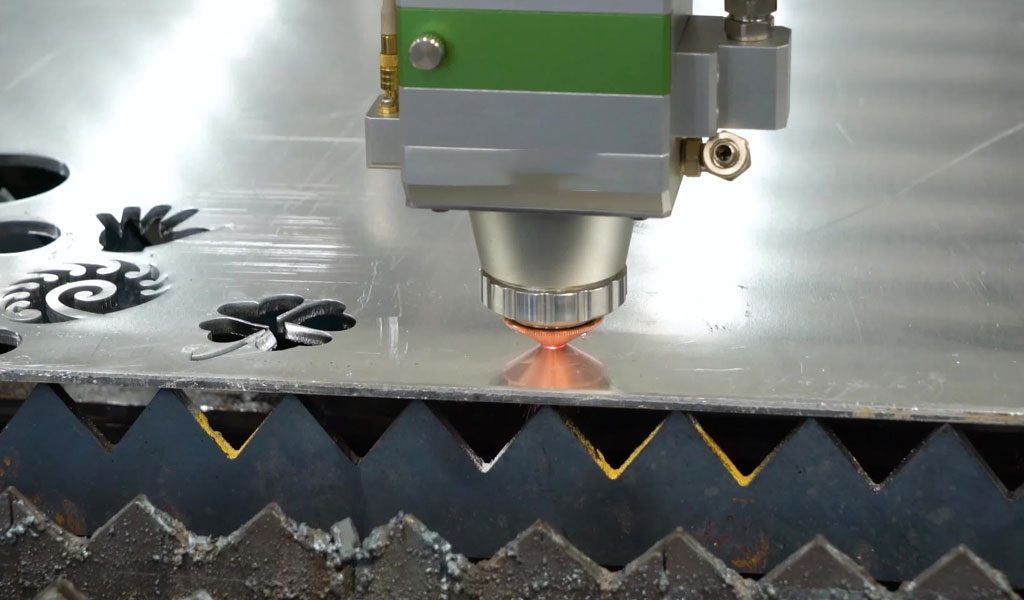
Fiber Laser Cut Metal Parts 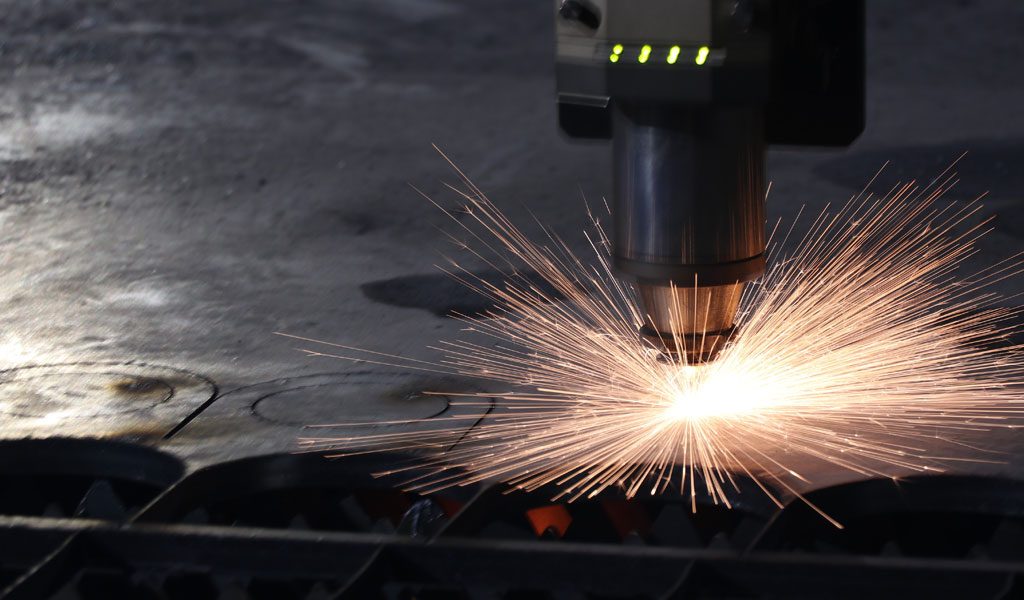
Laser Cut Metal Sheet Fabrication
Laser cutting is a highly precise method utilized for achieving clean and precise cuts in various thicknesses of sheet metal.
Advantages:
- Extreme Precision: Laser cutting delivers unparalleled precision, enabling the creation of intricate and precise cuts with fine details on thin to thick sheet metals.
- Clean Cuts: It produces clean edges without causing distortion, warping, or material damage, ensuring high-quality finishes on the cut metal surface.
- Automation Options: Laser cutting can be integrated into automated systems, allowing for efficient and consistent production, making it suitable for industrial-scale manufacturing.
Considerations:
- Expensive Machinery: The equipment required for laser cutting is costly, making it an investment that might not be feasible for all workshops, DIY enthusiasts, or smaller-scale projects.
- Professional Setup and Operation: Laser cutting involves complex machinery that requires professional setup, calibration, and operation, demanding specialized skills and knowledge.
- Safety Precautions: Safety is paramount when using laser cutters due to the high-powered laser beams. Safety protocols, including proper eye protection and ensuring a controlled environment, are crucial.
Recommendations for Use:
- Acquire proper training and knowledge on laser cutting operations before attempting to use the equipment.
- Ensure the workspace is adequately ventilated and equipped with safety measures to prevent accidents and exposure to laser beams.
- Regular maintenance of the laser cutter and adherence to safety protocols are essential for optimal performance and safety.
Laser cutting is renowned for its extreme precision and ability to produce clean, intricate cuts in thin to thick sheet metals. However, its expensive machinery, requirement for professional setup and operation, and stringent safety precautions make it less accessible to all DIY enthusiasts or smaller-scale operations. Nonetheless, for industrial applications and professionals equipped with the necessary resources and expertise, laser cutting remains an unparalleled method for achieving high-precision cuts in sheet metal.
Water Jet Cutting
Water jet cutting is a highly effective method used to cut intricate shapes in thick sheet metals.
Advantages:
- No Heat-Affected Zone: Unlike some other cutting methods, water jet cutting does not generate heat during the cutting process, preventing any heat distortion or alteration of the metal’s properties.
- Precise Cuts: It offers exceptional precision, allowing for accurate and intricate cuts without causing damage to the material.
- Minimal Finishing Required: Water jet cutting typically produces clean edges, reducing the need for additional finishing processes, saving time and resources.
Considerations:
- Expensive Equipment: Water jet cutting requires specialized and expensive equipment, including high-pressure pumps and cutting heads, which may pose a significant investment hurdle for smaller workshops or DIY enthusiasts.
- Professional Handling Required: Operating a water jet cutting machine necessitates skilled and knowledgeable handling due to its complexities and the high-pressure nature of the process.
- Material Limitations: While highly versatile, certain materials may not be suitable for water jet cutting due to their composition or thickness.
Recommendations for Use:
- Seek proper training or enlist professionals for the setup and operation of water jet cutting equipment to ensure safe and efficient use.
- Ensure a controlled environment with proper safety measures, as water jet cutting involves high-pressure water streams.
- Regular maintenance of the equipment is essential to ensure consistent and optimal performance.
Water jet cutting stands out for its ability to cut intricate shapes in thick sheet metals without generating heat-affected zones. Despite its advantages of precision and minimal finishing requirements, the expensive equipment and need for professional handling might limit its accessibility to smaller workshops or DIY enthusiasts. Nevertheless, for industries requiring precise and clean cuts without heat distortion in thick sheet metals, water jet cutting remains an invaluable method.
Hacksaw
A hacksaw is a basic yet effective tool used for making straight cuts in thinner sheet metals.
Advantages:
- Simplicity and Affordability: Hacksaws are simple hand tools that are affordable and easily accessible, making them suitable for DIY enthusiasts and small-scale projects.
- Suitability for Thinner Metals: They are particularly useful for cutting thinner sheet metals, offering a straightforward solution for basic cutting needs.
- Portability: Hacksaws are compact and portable, allowing for use in various settings without the need for power sources or complex setup.
Considerations:
- Slow Cutting Speed: Hacksaws generally have a slower cutting speed compared to powered tools, requiring more time and effort to complete cuts, especially in thicker materials.
- Effort Required: Cutting through sheet metal using a hacksaw can be physically demanding and may require considerable effort, particularly when dealing with denser or thicker metals.
Recommendations for Use:
- Use a fine-toothed blade designed for metal cutting to ensure smoother and cleaner cuts on sheet metal.
- Secure the sheet metal in a vise or with clamps to prevent movement and enhance cutting accuracy.
- Apply cutting fluid or lubricant to the blade to reduce friction and prolong its lifespan while improving cutting efficiency.
Hacksaws provide a simple and affordable solution for making straight cuts in thinner sheet metals, making them suitable for smaller-scale projects and DIY enthusiasts. However, their slower cutting speed and the physical effort required may limit their efficiency, especially for thicker or denser materials. Nonetheless, for basic cutting needs in thinner sheet metals, a hacksaw remains a practical and accessible tool.
Electric Metal Shears
Electric metal shears are specialized tools designed for making straight cuts in various thicknesses of sheet metal.
Advantages:
- Quick and Clean Cuts: Electric metal shears offer rapid cutting capabilities, providing clean and precise cuts in sheet metal.
- Suitability for Longer Cuts: These tools are suitable for longer cuts, allowing for efficient handling of larger sections of sheet metal with relative ease.
Considerations:
- Limited Maneuverability: Electric metal shears might have limited maneuverability compared to other cutting tools, making them less adept at handling curves or tight angles.
- Challenges with Curves: While effective for straight cuts, electric metal shears may struggle when cutting along curves or intricate shapes.
Recommendations for Use:
- Choose the appropriate electric metal shears based on the thickness and type of sheet metal you intend to cut.
- Ensure the sheet metal is secured firmly in place before cutting to prevent movement and ensure accurate cuts.
- Practice on scrap pieces to become familiar with the tool’s handling and its limitations when cutting different shapes or angles.
Electric metal shears offer the advantage of quick and clean straight cuts in various sheet metal thicknesses, making them suitable for longer cuts and larger sections. However, their limitations in maneuverability and difficulty in handling curves or tight angles may restrict their versatility compared to other cutting methods. For straight cutting needs in sheet metal, especially in longer sections, electric metal shears provide an efficient solution.
CNC Punching
CNC (Computer Numerical Control) punching is a precise method utilized for mass production or creating intricate patterns on sheet metal.
Advantages:
- High Accuracy: CNC punching ensures exceptional precision in cutting sheet metal, allowing for consistent and accurate results, even in complex designs or patterns.
- Rapid Production: It enables rapid production rates, making it highly efficient for large-scale manufacturing, reducing production time significantly.
- Automation Capabilities: CNC punching machines offer automation options, streamlining the production process and ensuring consistency in cuts across multiple sheets.
Considerations:
- Expensive Machinery: The equipment required for CNC punching is expensive, comprising specialized machines and software, which might pose a significant investment hurdle, especially for smaller workshops or DIY projects.
- Professional Setup and Operation: CNC punching machines necessitate professional setup, calibration, and operation, demanding skilled technicians or operators with expertise in programming and operating CNC machinery.
- Not Suitable for Small-Scale Projects: Due to the machinery’s scale and cost, CNC punching is typically more suitable for larger-scale manufacturing operations and may not be practical for smaller projects.
Recommendations for Use:
- Employ trained operators or technicians proficient in CNC programming and operation to ensure optimal utilization of the machinery.
- Regular maintenance of the CNC punching equipment is crucial to ensure consistent performance and accuracy.
- Plan and optimize designs for mass production to maximize the efficiency of the CNC punching process.
CNC punching offers high accuracy, rapid production rates, and automation capabilities, making it a valuable method for mass production or creating intricate patterns on sheet metal. However, its expensive machinery, professional setup requirements, and scale limitations might restrict its accessibility to smaller workshops or DIY projects. Nonetheless, for industries requiring high precision and efficient mass production in sheet metal manufacturing, CNC punching remains an indispensable method.
Tips for Effective Sheet Metal Cutting
- 1. Safety First : Prioritize safety by wearing appropriate personal protective equipment (PPE) such as goggles, gloves, and hearing protection to prevent injuries from sharp edges, sparks, or noise generated during cutting processes.
- 2. Select the Right Tool and Method : Choose the appropriate cutting method and tool based on the type, thickness, and intricacy of the sheet metal being worked on. Different tools excel in various cutting scenarios.
- 3. Secure the Sheet Metal : Ensure the sheet metal is firmly secured using clamps, a vise, or a worktable to prevent movement during cutting. This helps maintain accuracy and safety.
- 4. Use the Correct Blade or Cutting Attachment : Utilize the right blade or cutting attachment designed for the specific type and thickness of the sheet metal to achieve cleaner and more precise cuts.
- 5. Plan and Mark the Cutting Line : Measure and mark the cutting line accurately using a ruler, marking gauge, or scribe before cutting to ensure precise cuts and prevent errors.
- 6. Cutting Techniques : For straight cuts, follow the marked line and maintain a steady hand or guide to ensure accuracy.For curves or intricate shapes, practice patience and make incremental cuts, gradually shaping the metal to the desired form.
- 7. Lubrication or Cooling : Use cutting fluids or lubricants when applicable, especially with tools like saws or drills, to reduce friction and heat, prolonging the tool’s life and improving cutting efficiency.
- 8. Inspect and Deburr : Inspect the cut edges for any deformities or burrs after cutting. Use a file or deburring tool to smoothen and remove any sharp edges for a cleaner finish.
- 9. Practice on Scrap Material : Before cutting the actual project material, practice on scrap or test pieces to familiarize yourself with the tool, gauge its performance, and refine your cutting technique.
- 10. Maintenance and Care : Regularly maintain and sharpen cutting tools to ensure optimal performance and prolong their lifespan. Clean tools after use and store them properly to prevent damage.
- 11. Consider Environmental Factors : Consider the workspace environment; proper ventilation and safety measures are crucial, especially for methods generating sparks, fumes, or high noise levels.
- 12. Seek Professional Help When Needed : For complex projects or when using specialized equipment like laser or plasma cutters, consider seeking guidance or assistance from professionals to ensure safety and accuracy.
Efficient sheet metal cutting requires attention to detail, the use of appropriate tools and techniques, and a focus on safety. By following these tips, one can achieve cleaner, more accurate cuts while maintaining safety standards throughout the cutting process.
In Conclusion
Sheet metal fabrication and cutting encompasses a spectrum of methods and tools, each with its own advantages, considerations, and applications. From the simplicity of shears and hacksaws to the precision of laser cutting and CNC punching, the diversity in cutting techniques allows for versatility in meeting various project needs.
Understanding the ideal applications and considerations for each cutting method is crucial. Tools like shears or hacksaws offer cost-effective solutions for smaller projects and thinner metals, while specialized methods like laser cutting or CNC punching excel in precision and mass production but often require substantial investments and professional expertise.
Safety remains paramount throughout the cutting process. Proper protective gear, securing the material, and adherence to safety protocols are essential to prevent injuries and ensure a safe working environment.
Moreover, selecting the right tool, using the appropriate cutting attachment or blade, and practicing accurate measurement and marking techniques contribute significantly to achieving cleaner, more precise cuts.
As technology advances, newer methods like plasma cutting, water jet cutting, and CNC punching continue to redefine efficiency and precision in sheet metal cutting. However, accessibility and feasibility for smaller workshops or DIY enthusiasts may vary due to equipment costs and complexity.
Ultimately, effective sheet metal cutting requires a balance between the chosen method’s capabilities, the project’s requirements, and the available resources. By employing the right technique, using the correct tools, prioritizing safety, and honing cutting skills, individuals can achieve accurate, clean, and efficient cuts in various sheet metal applications.



